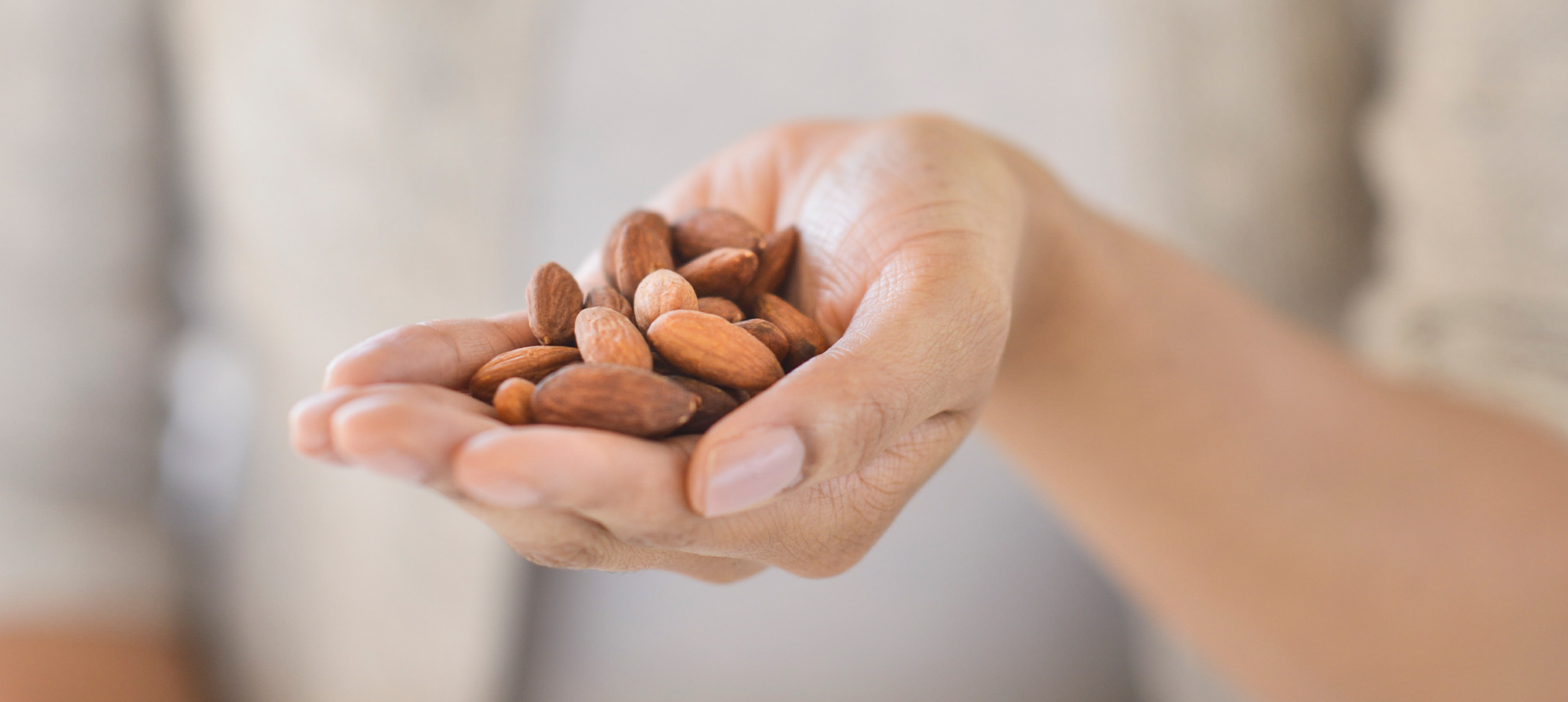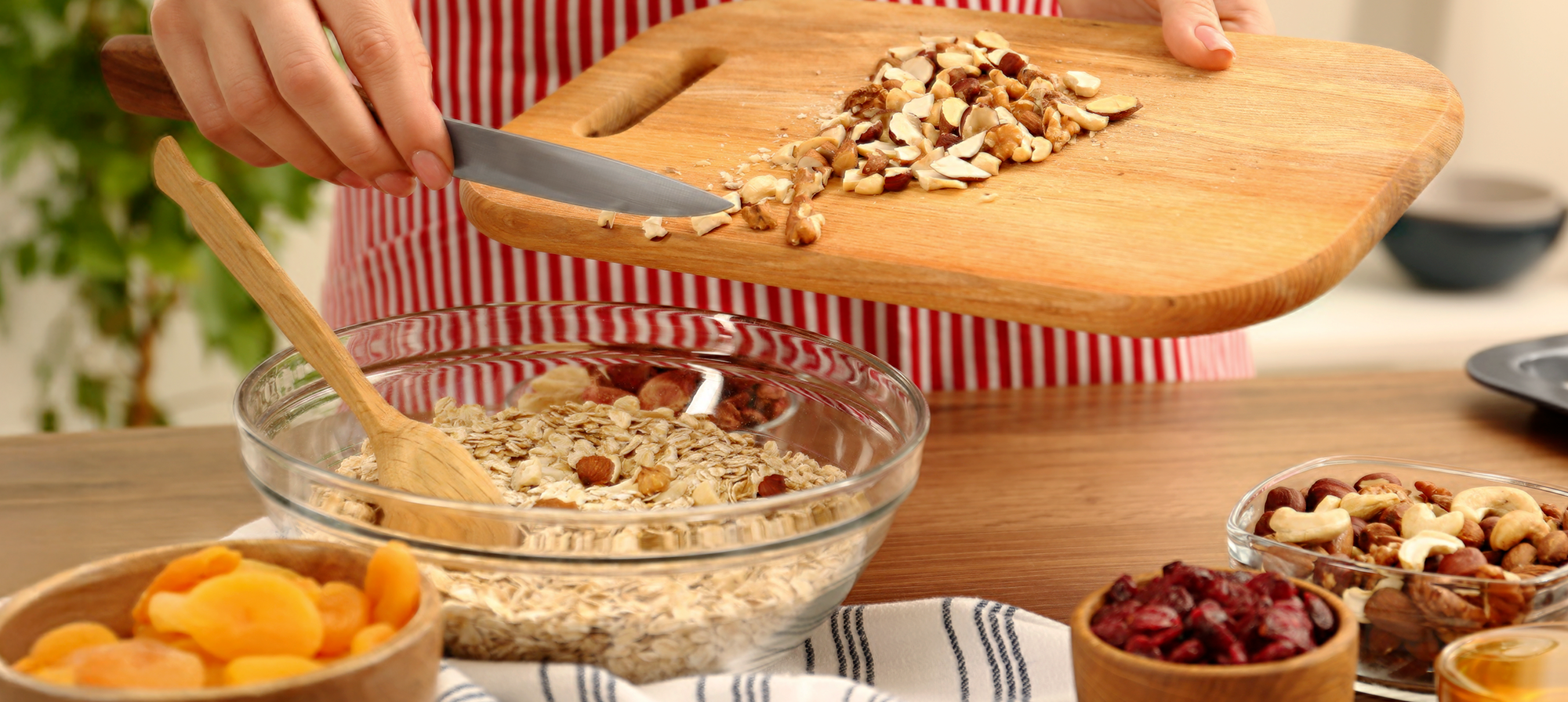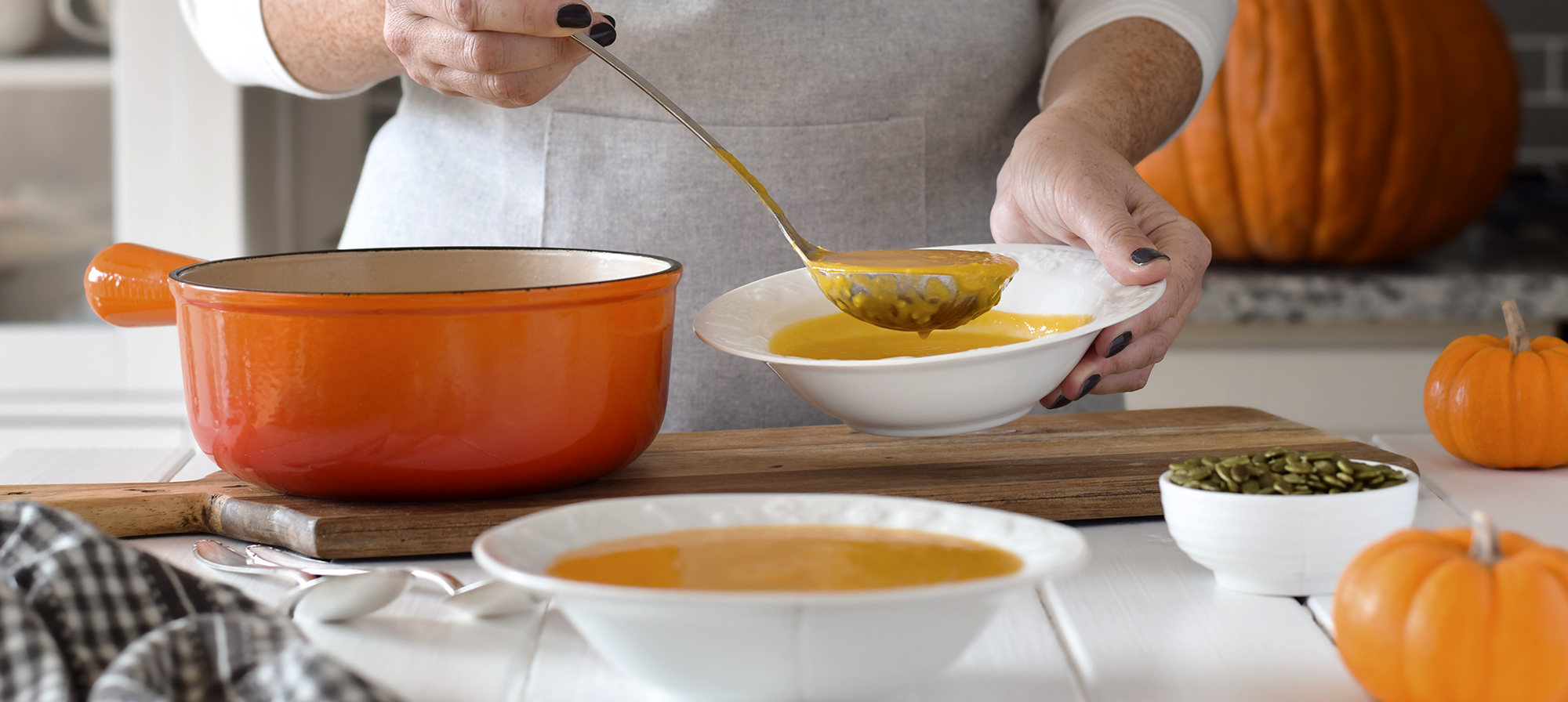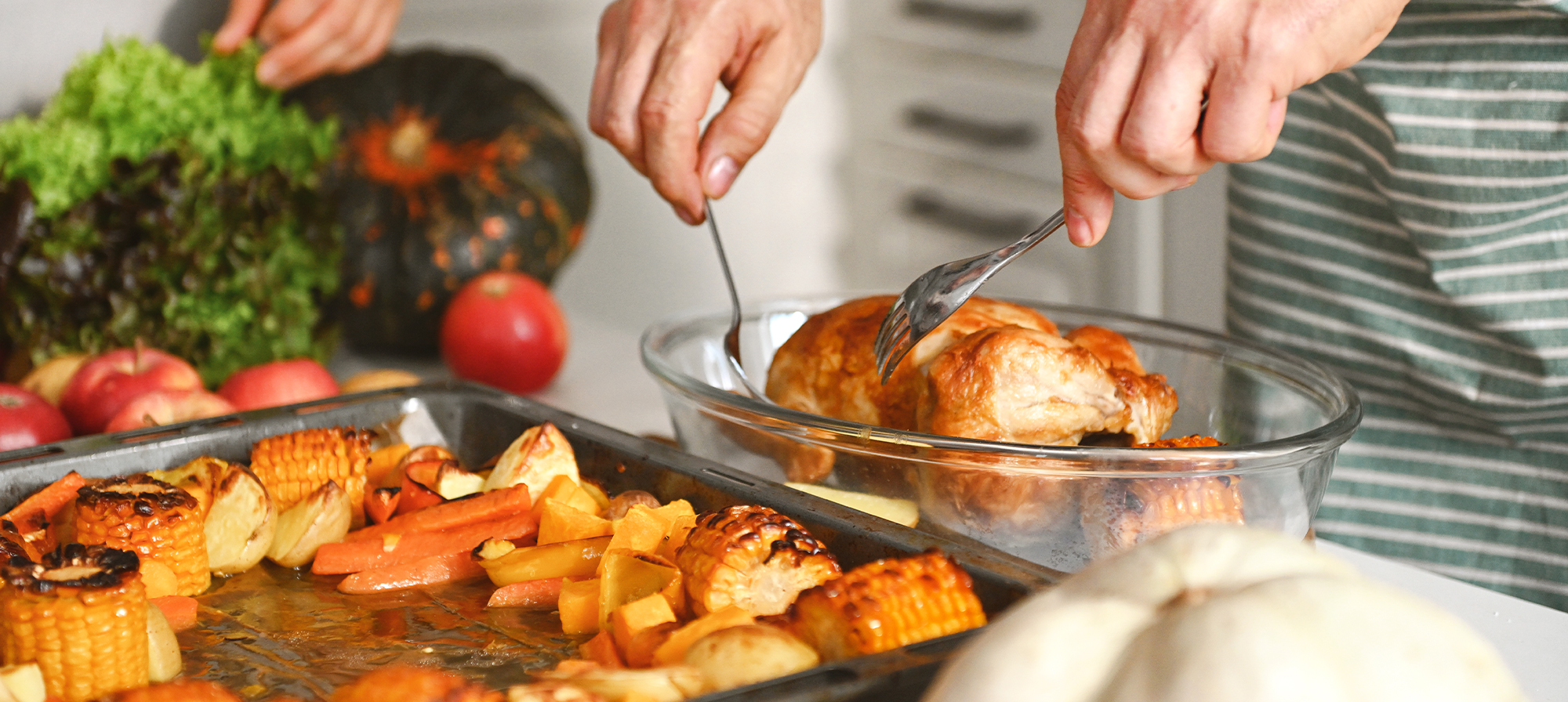Portion sizes may have grown, but you can choose how much you actually eat. Estimate portions with a tool you always have on hand—your hand!
Do you know what one serving of a particular food is? Many people don’t. But even if you do, you may not want to pull out a food scale or measuring cup every time you eat. And if you’re eating out, it’s even harder to measure portions.
Thankfully, there's an easier way. You can estimate the portion size of any food using just your hand!
Understanding serving size and portion size
First, it’s helpful to know the difference between serving size and portion size.
Serving size is a specific amount of food. This is listed on a product’s Nutrition Facts label. Recipes often include it, as well. The Nutrition Facts tell you the number of calories and amount of fat, sugar, sodium, and other nutrients in one serving of the food.
Portion size is how much you actually eat. This may be more or less than a serving, and that’s not necessarily good or bad. But if you know how to estimate your portions, you can make mindful choices about how much of each food you eat.
 Measuring portions with your hand
Measuring portions with your hand
No matter where you are—at home, at a restaurant, or at a friend’s house—you can estimate how much you’re eating using your hand to measure food. Here’s how:
- Palm = 3 ounces
- Use for meats like chicken, turkey, fish, or beef
- Closed fist = 1 cup
- Use for fruits, veggies, and yogurt
- Cupped hand = ½ cup or 1 ounce
- Use for beans, pasta, rice, and dried fruit (½ cup)
- Use for nuts and seeds (1 ounce)
- Thumb = 1 tablespoon or 1 ounce
- Use for salad dressing, sour cream, and peanut butter (1 tablespoon)
- Use for cheese cubes and wedges (1 ounce)
- Tip of thumb = 1 teaspoon
- Use for fats like oils, butter, and mayonnaise
Keep in mind that these are just estimates, and that’s OK. You don’t need an exact measurement to make mindful choices about what you eat. But if you’re wondering how your own hand measures up, you can compare it to measuring cups and spoons. Make a fist. Does it look about the same size as 1 cup? Does your thumb look about the same as a tablespoon? If your hands are large or small, you can adjust your own estimates.

Knowing your daily food needs
Knowing how much of each food you should consume daily can help you decide your portion sizes. Each person will have specific nutritional needs based on a number of factors, such as age, activity level, and more. You may have different needs if you have certain health conditions. Talk with your doctor about your needs if you are dealing with health issues.
For an adult who eats 2,000 calories per day, the American Heart Association provides these average daily recommendations:
Vegetables—2 ½ cups
Examples that equal a 1-cup serving:
- 1 cup chopped vegetables (1 fist)
- 2 cups leafy greens raw (2 fists)
- 1 cup 100% vegetable juice (1 fist)
Eat a variety of vegetables. Fresh, frozen, and canned vegetables (without additives and preservatives) are all great choices for meeting your daily intake. Limit vegetable juice to no more than one daily serving. It’s not as filling as whole vegetables and lacks some nutrients, such as fiber. Notice that since raw leafy greens have a lot of air between the leaves, you need twice as many to equal a 1-cup serving.
In a vegetable rut? Discover 7 ways to enjoy celery.
Fruits—2 cups
Examples that equal a 1-cup serving:
- 1 medium or 2 small whole fruits (about the size of your fist)
- 1 cup chopped fruit (1 fist)
- ½ cup 100% fruit juice (1 cupped hand)
- ½ cup dried fruit (1 cupped hand)
Eat a variety of fruits. Fresh and frozen fruits are always a great choice. When choosing canned or dried fruit, be aware of added sugar. Choose canned fruit packed in water or 100 percent juice. Look for dried fruit with little or no added sugar. When it comes to fruit juice, look for 100 percent juice, avoid added sugar, and limit juice to no more than one daily serving.
Grains—6 ounces, with at least half being whole grains
Examples that equal a 1-ounce serving:
- One slice of bread
- One small tortilla
- 1 cup cereal (1 fist)
- ½ cup cooked brown rice, pasta, or hot cereal, such as oatmeal (1 cupped hand)
- 3 cups air-popped popcorn (3 fists)
Choose whole grains as much as possible, getting at least half your daily servings from them. Some examples of whole grains include old-fashioned oats, brown and wild rice, whole wheat bread and pasta, and popcorn.

Dairy—3 cups
Examples that equal a 1-cup serving:
- 1 cup dairy milk or yogurt (1 fist)
- 1 cup fortified soy milk or yogurt (1 fist)
- 1 ½ ounces hard cheese (1 ½ thumbs or 2 slices)
Keep in mind that full-fat dairy products contain saturated fat. It’s best to limit this type of fat. Low-fat and fat-free dairy products can be a healthy choice but still check the label. Some products use added sugar and other additives and preservatives to enhance the flavor in place of the missing fat. If you can’t or don’t eat dairy, you can get nutrients like calcium from other sources.
Protein—5 ½ ounces
Examples of portion sizes:
- 1 ounce (1 cupped hand) nuts or seeds = 2 ounces protein
- 1 tablespoon (1 thumb) peanut butter = 1 ounce protein
- ½ cup (1 cupped hand) cooked beans, peas, or lentils = 2 ounces protein
- 1 egg = 1 ounce protein
- 3 ounces (1 palm) meat or seafood = 3 ounces of protein
Eat plenty of plant-based protein. If you eat meat, choose lean cuts and skinless poultry most often. Aim for 6 to 8 ounces of seafood each week to get your heart-healthy omega-3 fatty acids.
Learn how to add more plant-based foods to your diet.
Fats and oil—up to 3 servings
Examples that equal one serving:
- 1 teaspoon vegetable oil (such as olive, avocado, or canola oil) (tip of thumb)
- 1 teaspoon butter or margarine (tip of thumb)
- 1 tablespoon full-fat mayonnaise (1 thumb)
- 2 tablespoons light salad dressing (2 thumbs)
Choose mostly unsaturated fats. You’ll find these in oils like olive, avocado, and canola. You can also get healthy fats from foods in your diet, like nuts, seeds, avocados, beans, lentils, fatty fish, skinless chicken, and lean meat. Fats that are solid, like butter, coconut oil, and animal fat, are high in saturated fat. Limit or avoid this kind of fat.
You can visit the USDA’s MyPlate website to get a personalized food plan. 
Practical tips for portion control
Now that you can visualize what a portion looks like, you can choose how much you want to eat. Here’s an example of how you can portion out each meal:
Breakfast: 1 cupped hand of oatmeal (1 ounce whole grains) topped with 1 cupped hand of blueberries (½ cup fruit), plus 1 cupped hand of low-fat yogurt (½ cup dairy) and 1 medium banana (1 cup fruit)
Lunch: a sandwich on 2 slices of whole wheat bread (2 ounces whole grains) with 2 slices of cheese (1 cup dairy) and a palm-sized amount of turkey (3 ounces of protein), plus a salad made up of 2 fists mixed greens (1 cup veggies), 1 cupped hand of chopped tomatoes and cucumbers (½ cup veggies), and 2 thumbs of vinaigrette (1 serving fat)
Dinner: 1 palm of baked salmon (3 oz protein), 1 fist steamed broccoli (1 cup veggies), 1 fist rice (1 cup grains), and 1 fist low-fat cottage cheese (1 cup dairy)
Remember that an adult eating 2,000 calories per day, with no special dietary needs, should aim for 2 ½ cups of vegetables, 2 cups of fruit, 6 ounces of grains (with at least 3 ounces of whole grains), 3 cups of dairy, 5 ½ ounces of protein, and up to 3 servings of fat. The above plan meets nearly all these goals. It totals 2 ½ cups of veggies, 1 ½ cups of fruit, 5 ounces of grains (with at least 3 ounces of whole grains), 2 ½ cups of dairy, 6 ounces of protein, and one serving of fat.
Depending on your meal schedule, you may need snacks throughout the day. And healthy snacks can help you get all the servings you need from each food group. Plus, they’ll help keep you from getting too hungry between meals, which helps prevent overeating. Some healthy snacks that you could eat include a small bowl of berries, carrots with hummus, whole grain crackers with cheese, and air-popped popcorn (topped with a little salt and a “tip of thumb” of butter or, better yet, olive oil).
This is just one example of what your food for a day could look like. When planning your meals and snacks, consider what you’ve already eaten to make balanced food choices.
Portion control when eating out
If you’re eating at a restaurant, portions tend to be bigger. That can lead to overeating. Here are some additional tips that can help make portion control easier when eating out:
- Eyeball your portion sizes before you dig in and decide how much you want to eat.
- Ask for a to-go container when you get your meal and save some portions for later.
- Split a meal with a friend or order an appetizer instead.
- Order a broth-based soup or a salad as the main course and ask for some protein on top or on the side.
Mindful eating can also help you control your portions. Mindful eating means paying attention to the entire eating experience. Here’s how you can do that:
- Slow down. Eat slowly and put your fork down between bites. This can help you notice when you are full, so you don’t overeat. It also helps you enjoy your food more.
- Engage your senses. Think about all aspects of your food—the taste, smell, colors, texture, and even sounds. Pause while eating to consider these things and how you feel in the moment.
- Take small bites and chew completely. Small bites can help you slow down and savor your food. Chewing your food well also helps with digestion.
Understanding portion sizes empowers you to make informed food choices. So, take matters into your own hands—decide for yourself what your portion sizes will be!

Not a Silver&Fit® member? Learn more about everything the program has to offer, including more helpful healthy living tips like this, here on our website.
This information is not intended to take the place of regular medical care or advice. Please check with your doctor before using this information or beginning any self-care program. Images used for this article do not depict any members of the Silver&Fit program.
References
Almiron-Roig, E., Forde, C. G., Hollands, G. J., Vargas, M. Á., & Brunstrom, J. M. (2020). A review of evidence supporting current strategies, challenges, and opportunities to reduce portion sizes. Nutrition Reviews, 78(2), 91–114. https://doi.org/10.1093/nutrit/nuz047
American Heart Association. (2024, August 29). Suggested servings from each food group. https://www.heart.org/en/healthy-living/healthy-eating/eat-smart/nutrition-basics/suggested-servings-from-each-food-group
Cleveland Clinic. (2024, December 3). Understanding portion sizes: How much are you really eating? https://health.clevelandclinic.org/how-much-are-you-really-eating-perception-vs-reality
Gibson, A. A., Hsu, M. S., Rangan, A. M., Seimon, R. V., Lee, C. M., Das, A., Finch, C. H., & Sainsbury, A. (2016). Accuracy of hands v. household measures as portion size estimation aids. Journal of Nutritional Science, 5, e29. https://doi.org/10.1017/jns.2016.22
Harvard T.H. Chan School of Public Health. (2020, October). Dairy. The Nutrition Source. https://nutritionsource.hsph.harvard.edu/dairy/
National Institute of Diabetes and Digestives and Kidney Diseases. (2021, July). Food portions: Choosing just enough for you. https://www.niddk.nih.gov/health-information/weight-management/just-enough-food-portions
U.S. Department of Agriculture. (n.d.). Rethink fats. MyPlate. https://www.myplate.gov/tip-sheet/rethink-fats
University of Rhode Island. (n.d.). Helping hands. https://web.uri.edu/wp-content/uploads/sites/1241/Helping-Hands-Portion-Sizes-Eng.pdf
U.S. Department of Agriculture. (n.d.). Dietary guidelines for Americans, 2020-2025. https://www.dietaryguidelines.gov/sites/default/files/2021-03/Dietary_Guidelines_for_Americans-2020-2025.pdf
Healthyroads. (n.d.). Portion Control Activity. https://www.healthyroads.com/Global/ExcludedItems/Binary/TOOL_PortionControlActivity_tcm8-105695.pdf
This article was written by Keleigh Somes, edited by Kimberley Reynolds, and clinically reviewed by Elizabeth Thompson, MPH, RDN, 3/6/2025.





